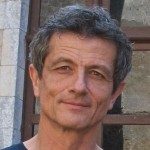Link to Pubmed [PMID] – 2188062
Mol. Biol. Med. 1990 Apr;7(2):173-85
The sequences preceding the albumin mRNA start site are able to direct efficient transcription only upon introduction into cells expressing the endogenous albumin gene. In transient expression assays, the activity of a reporter gene (CAT) linked to this promoter is 100-fold higher in H4II differentiated hepatoma cells than in H5 dedifferentiated cells which no longer express their albumin gene. This tissue specificity depends on the very proximal promoter region, composed of a CCAAT box, the proximal element and a TATA box. Deletion of the CCAAT box leads to a two- to threefold decrease in activity, deletion of the proximal element (PE) results in loss of activity. The PE is a high-affinity binding site for HNF1/APF, a strictly liver specific trans-acting factor. When the affinity of this factor for PE is decreased by bacterial methylation (PE includes a dam methylase site), by mutation, or by its replacement with the homologous element from the alpha-fetoprotein gene (AFP), the activity of the short promoter (PE plus the TATA box) is abolished. This activity can be rescued in the presence of the more upstream elements: DEII, DEI and the CCAAT box (recognized, respectively, by the NF1/CTF, C/EBP and NFY/ACF factors) which are then absolutely required. Our results suggest that the upstream elements contribute to promoter activity by stabilizing the HNF1-PE complex and not by direct interaction with TFIID or the RNA polymerase. It is probable that these elements, essentially dispensable in already differentiated hepatoma cells, play a crucial role during development or differentiation to activate the promoter in cells that contain a low concentration of HNF1 and/or an HNF1 unable to open inactive chromatin alone.

